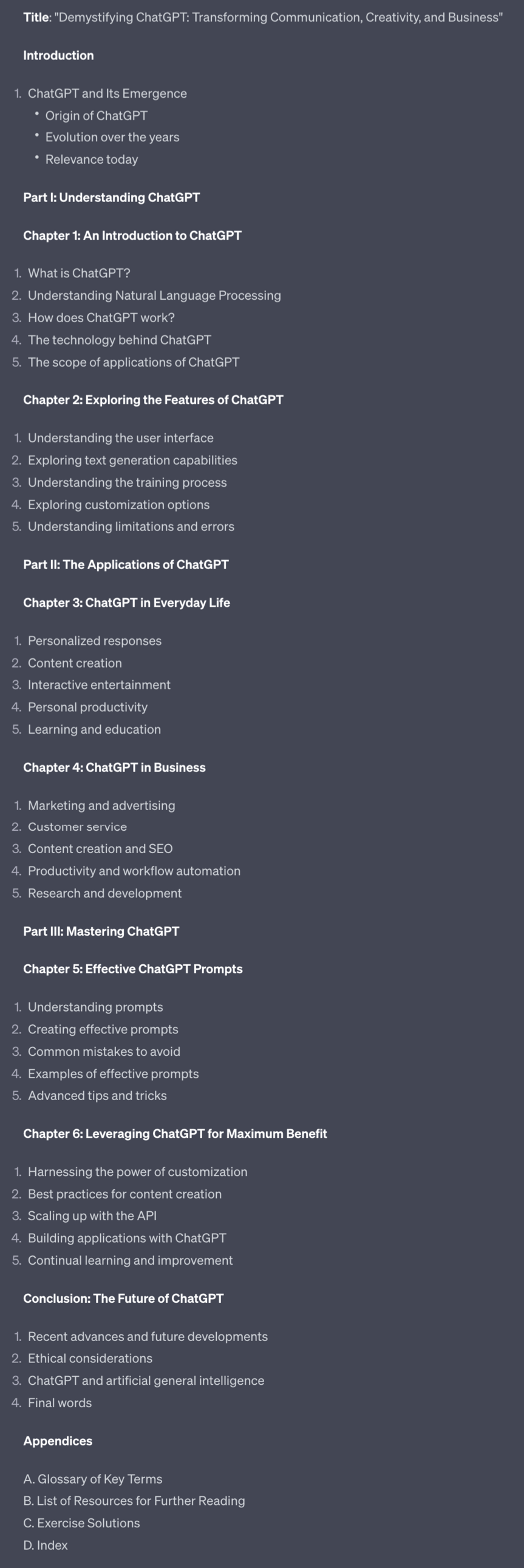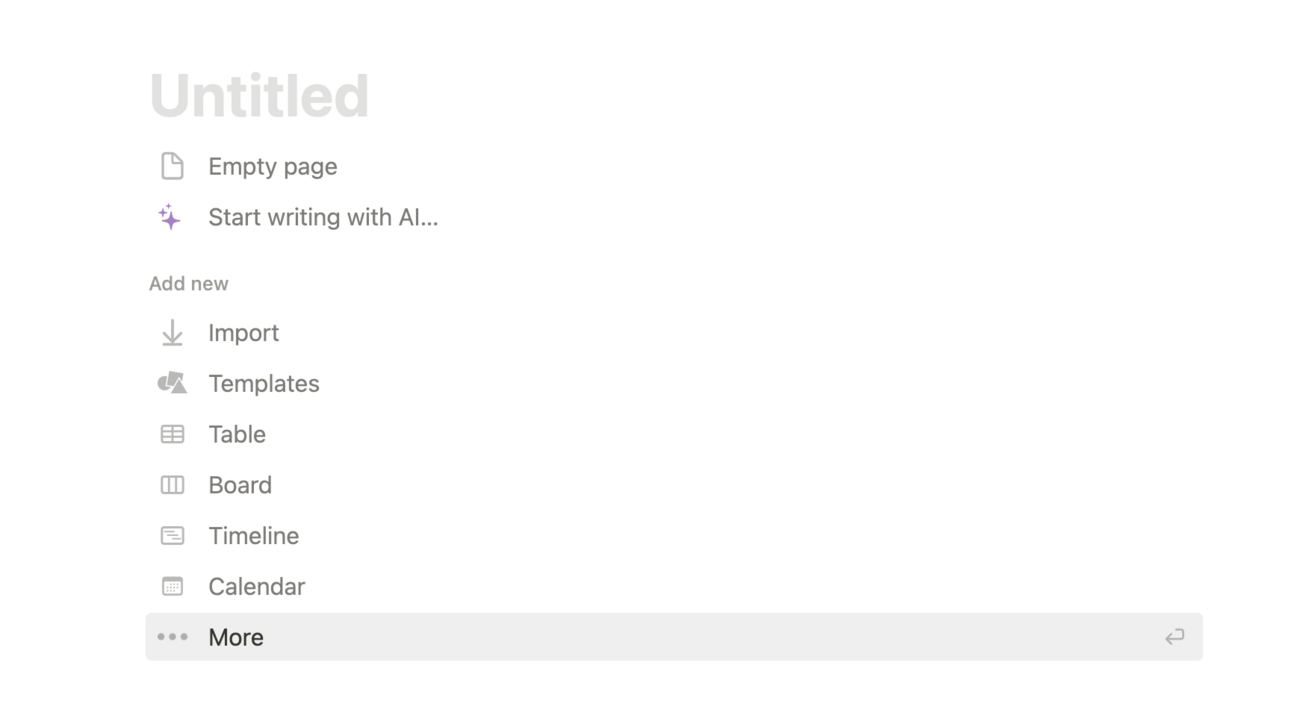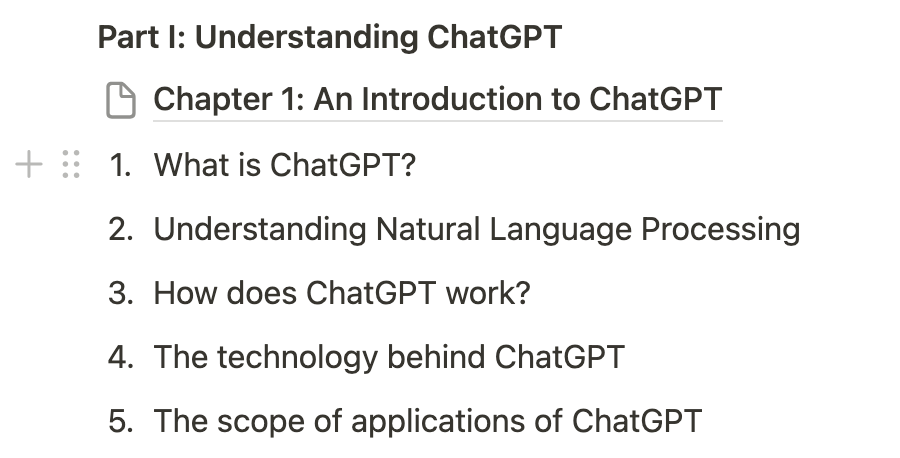Hey Prompt Entrepreneur,
In the last Part we went through a process to decide our Amazon Category.
Now, Category in hand, we’re going to analyse the competition, find out what works for them and then use that information to put together a structure for our book.
Unlike the last Part this will use ChatGPT heavily. So boot it up and let’s get prompting!
Let’s get started:
Plan Your Book
1. Analyse category bestsellers for best practices
First up we’re going to work out the winning formula for a best seller.
We’ll do this by analysing what already works. We’ll look at the top books in our category, see what they are doing and use that as a model for structuring our book.
Here’s the prompt:
Act as a book editor.
You are going to help me analyse 5 bestselling book descriptions to help me extract best practices.
Ask for a book description then analyse the bestsellers book description and extract the information about the structure, features, benefits, length of book.
Then ask for the next book description. Repeat the process of extracting information.
Repeat until you have collected information from 5 books total. Stop at 5 books.
Then use the information from all 5 analyses to compile a "best practices" guide for my book's structure, features, benefits and length to emulate the success of these bestsellers. Give specific examples rather than general advice.
Start with this prompt, hit Enter and ChatGPT will ask for the first of the descriptions.
Copy paste the whole book description from Amazon. Make sure to click “Read more” as details are often hidden. Also make sure to copy the Print Length from just below the main description.
Paste everything in and hit Enter. ChatGPT will process the details of the first book description and then ask for the second book. Continue this until you’ve done all top 5.
Prompt Output 💬

The output gives you a set of best practice guidelines needed to emulate the success of the other best sellers.
We’ll be using this shortly to structure our book. First though let’s layer in reader feedback via the reviews.
2. Analyse reviews for reader feedback
We now have some basic guidelines that we’re going to feed to ChatGPT to help us structure the book.
However, the description is written by the author and therefore is (obviously!) biased. They’re going to write about how great their book is because they want to sell copies.
Let’s add another layer of analyse by extracting information from reviews:
Act as a book publisher.
You are going to help me analyse 5 bestselling book reviews to help me extract errors to avoid.
Ask for a book review then analyse the bestsellers book's review. Then ask for the next book's reviews. Repeat the process of extracting information.
Repeat until you have collected information from 5 books total. Stop at 5 books.
Then use the information from all 5 analyses to compile a master list of problems to avoid as well as how best to avoid them. This list should draw from all 5 analyses. Give specific examples rather than general advice.
This prompt will ask you for the reviews for each of the books you are analysing.
Provide it with the 3 star reviews.
Huh? Why? Bit weird no?
The reason we do this is that 3 star reviews tend to give us the most information. 5 star tells us very little – “this book was great, love it, we’re getting married and having babies together”.
1 star reviews conversely tend to be people who are pissed off and don’t provide practical feedback. You’ll see a lot of “didn’t work on my Kindle” or “book is rubbish”. 1 star people don’t give us anything valuable to work with.
The sweet spot is 3 stars – that’s someone who has mixed feelings about the book and tends to write something more nuanced. So go ahead and grab these reviews to copy/paste in.
Prompt Output 💬

This gives us a list of recommendations based on user feedback rather than purely what the author says about the book. Now we have a more balanced picture of our best sellers.
3. Basic book structure
We’re now going to start pulling together our work from Part 1 and the last 2 steps to generate our book structure.
Here’s the prompt:
Act as a book writer
Help me create a structure for a book
The topic is [Amazon category]
Keywords to include are [top 3 Amazon keywords]
Use these guidelines when structuring the book
#Begin guidelines#
[Copy paste all guidelines]
#End guidelines#
Give me a full book outline with sections, chapters, main points (5) per chapter and any relevant appendicesGrab the Amazon category we decided upon as well as 3 of the top Amazon keywords we researched in Part 1
Also get your guidelines from the last two steps and copy/paste them all in.
This prompt will use all of your pre-production work to generate a book structure.
Prompt Output 💬

Not bad! We’re getting somewhere now.
By using all the existing bestsellers as models we’ve now created a structure that builds upon them all. We’re going to use this to “stand on the shoulder of giants” and outrank them
4. Structure Edit and preparation for writing
Now that we have a basic structure for the book we want to start getting ready for the writing process which begins in Part 3.
I prefer to use Notion for this. You can use whatever writing tool you want. But I do recommend Notion because it’s a good way to structure book writing across multiple documents (rather than one looooong Word document).
Notion is free and you can grab it at https://www.notion.so/
Create a new Page. It will look like this:

Click on the Empty Page line and copy/paste your book structure into this Page. This is your Master Structure document now.
Here’s the cool part.
Highlight one of the Chapters like this:

Click on the “Text” dropdown and you’ll see you can change this text into lots of other things.
Go ahead and make it a Page:

In this example Chapter 1: An Introduction to ChatGPT is now its own Page. It’s a sub-page of the main structure Page. I can now add the content specific to that chapter directly into the Chapter 1 sub-page.
This allows us to keep everything nice and tidy and makes the process of compiling the book a lot easier! Take it from me: someone who has tried to structure books in a single Word document before!
Whilst we’re here also start to remove Chapters and sections you think make no sense. This is the first Editing pass. Removing Sections and Chapters now is much more efficient than doing it after you’ve written them! So go nuts cutting it down early rather than later!
Pulling it together
In this Part we’ve continued our pre-production work, learning more and more about the current best sellers in our Category.
We then leveraged that research into finally compiling a structure for our book.
In the next Part we’re going to start the writing process to flesh out the structure and start making it look like a proper book!
A reminder of this week:
Part 1: Decide your book topic
Part 2: Plan your book
Part 3: Write your book
Part 4: Publish your book
Part 5: Market your book
